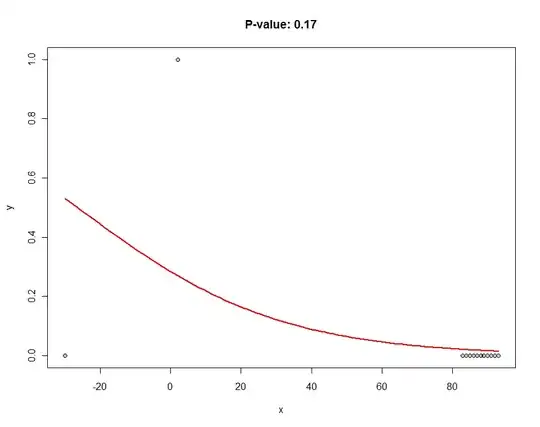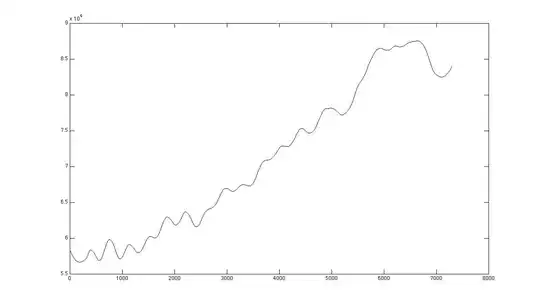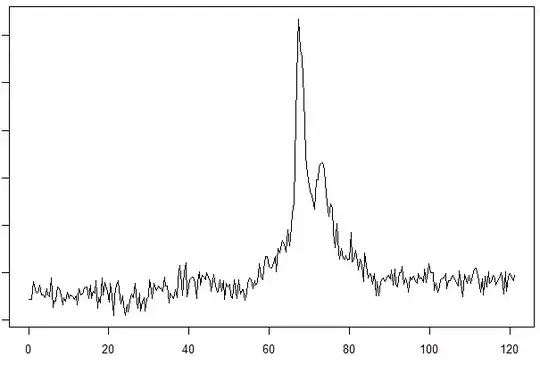I am interested in finding the mixture of distributions (Beta in my case) which best fits what is effectively a empirical pdf.
The data is actually instrument output and due to the nature of the technique individual observations are not recorded, but instead the count of observations at a particular value is returned.
Most approaches for fitting mixtures to data begin with the actual sample - is there a more appropriate starting point when the empirical pdf is the known?
Below I have included some plots of the data. To be upfront, the x axis is time, but is better understood as a measure of a chemical property that can be expressed continuously. Components have discrete values in x, but elute as distributions due to to various non-ideal effects in the experiment. I am trying to recover the individual components, but more realistically to separate the well resolved components and the noise depicted as a fluctuating baseline in figure 3.
I am open to criticism regarding the approach as well, but no effective tools exist in my field to achieve this and after evaluating many other attempts I think this approach may be at least functional if not statistically valid.


